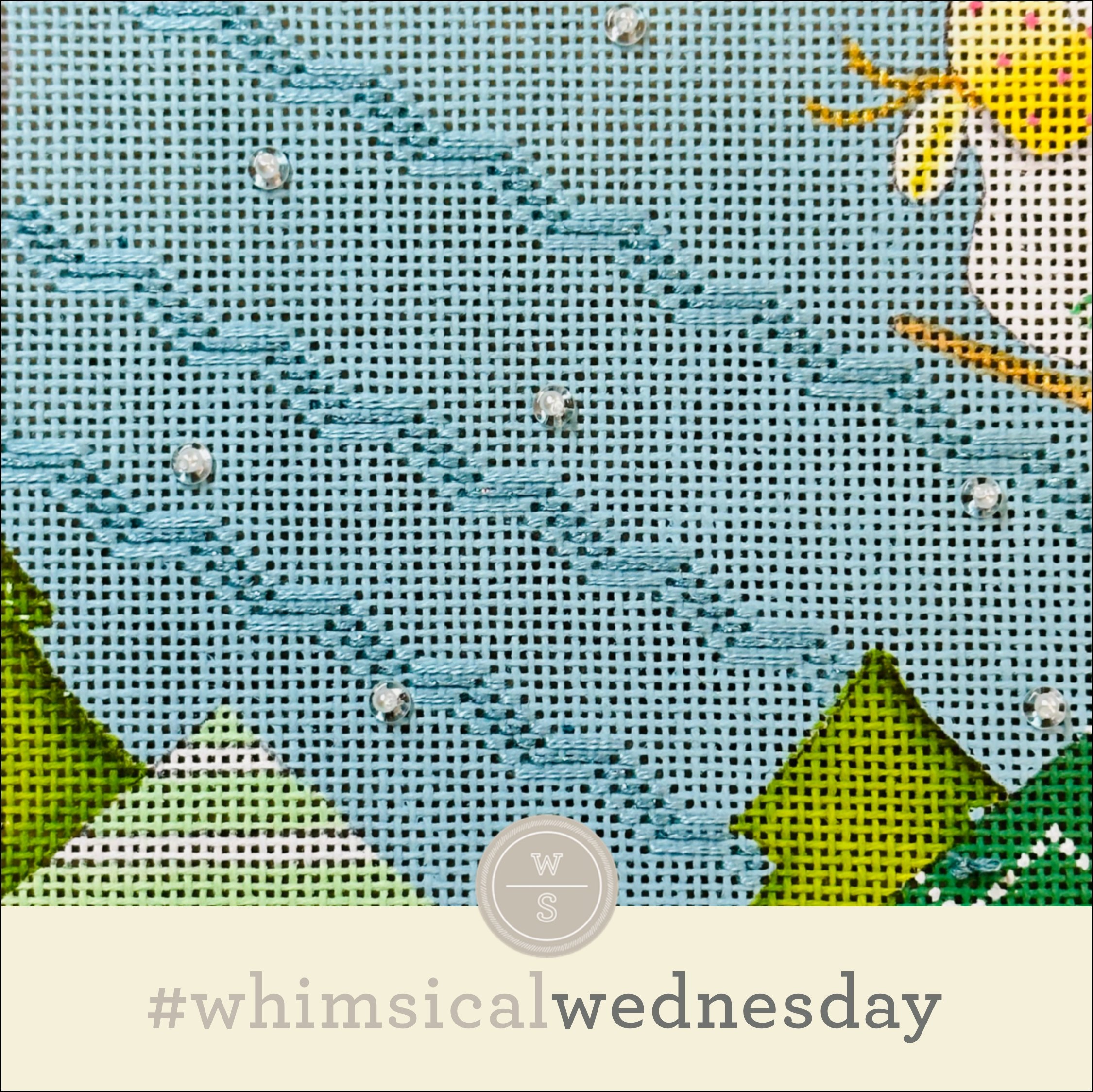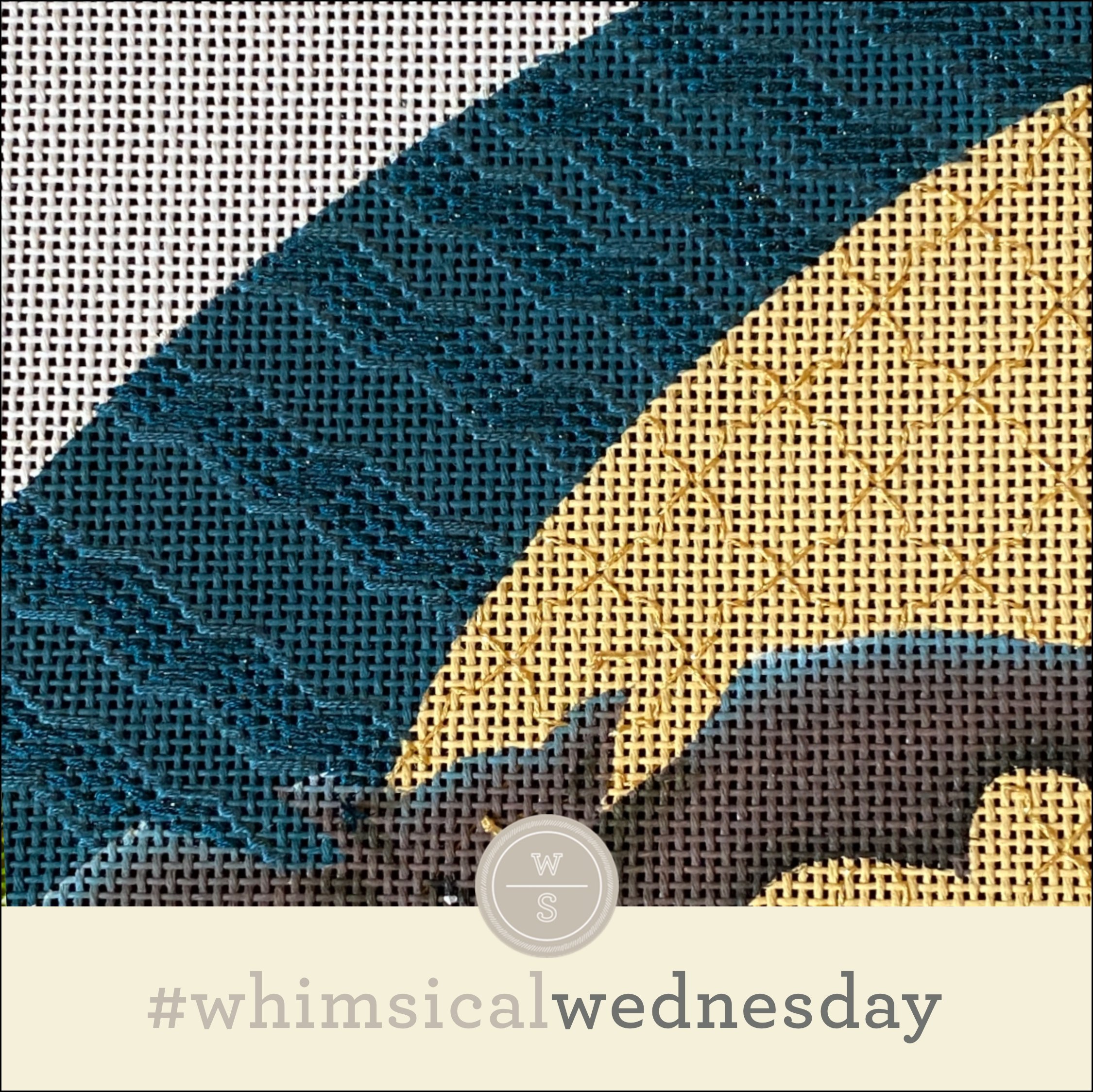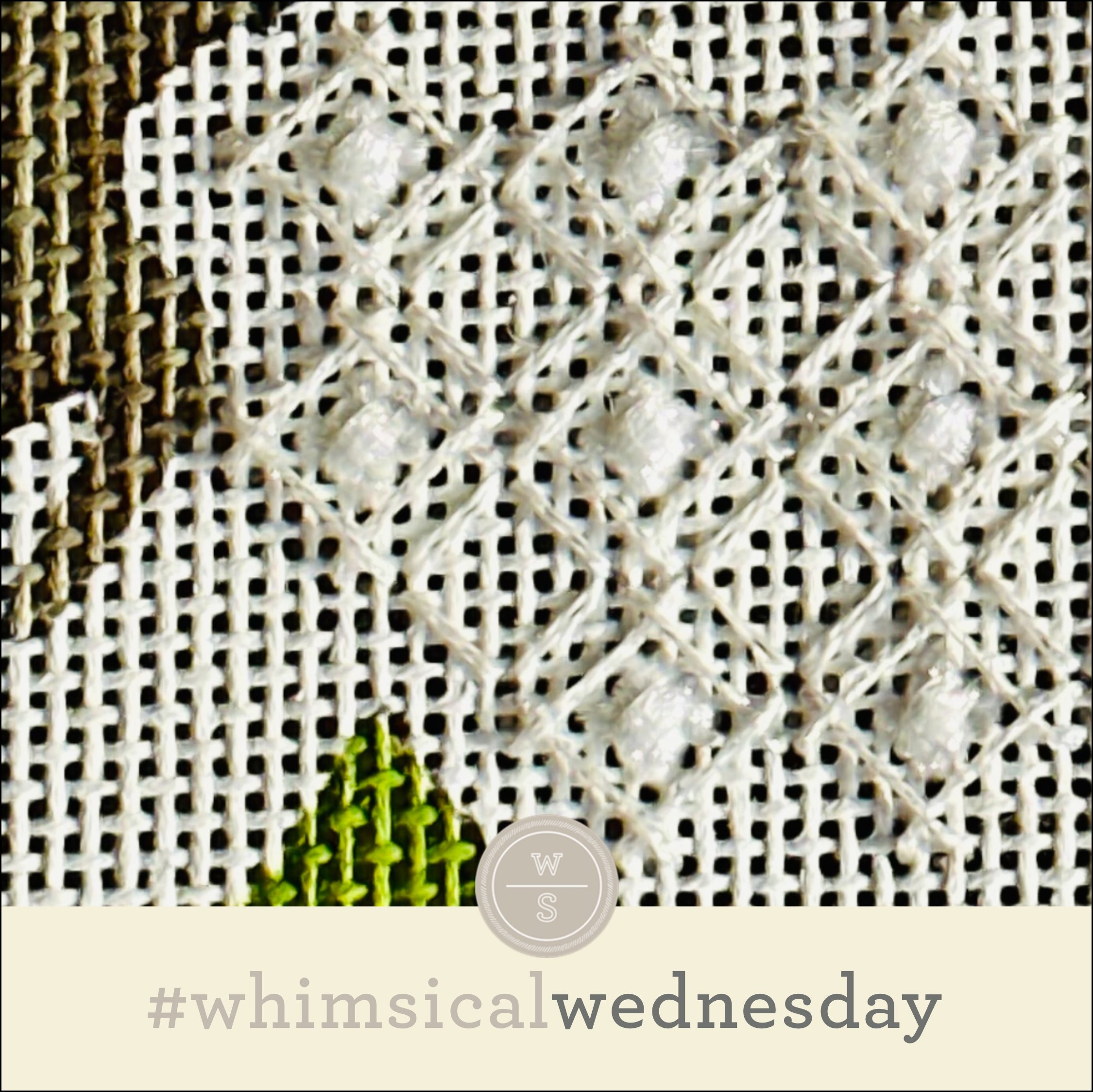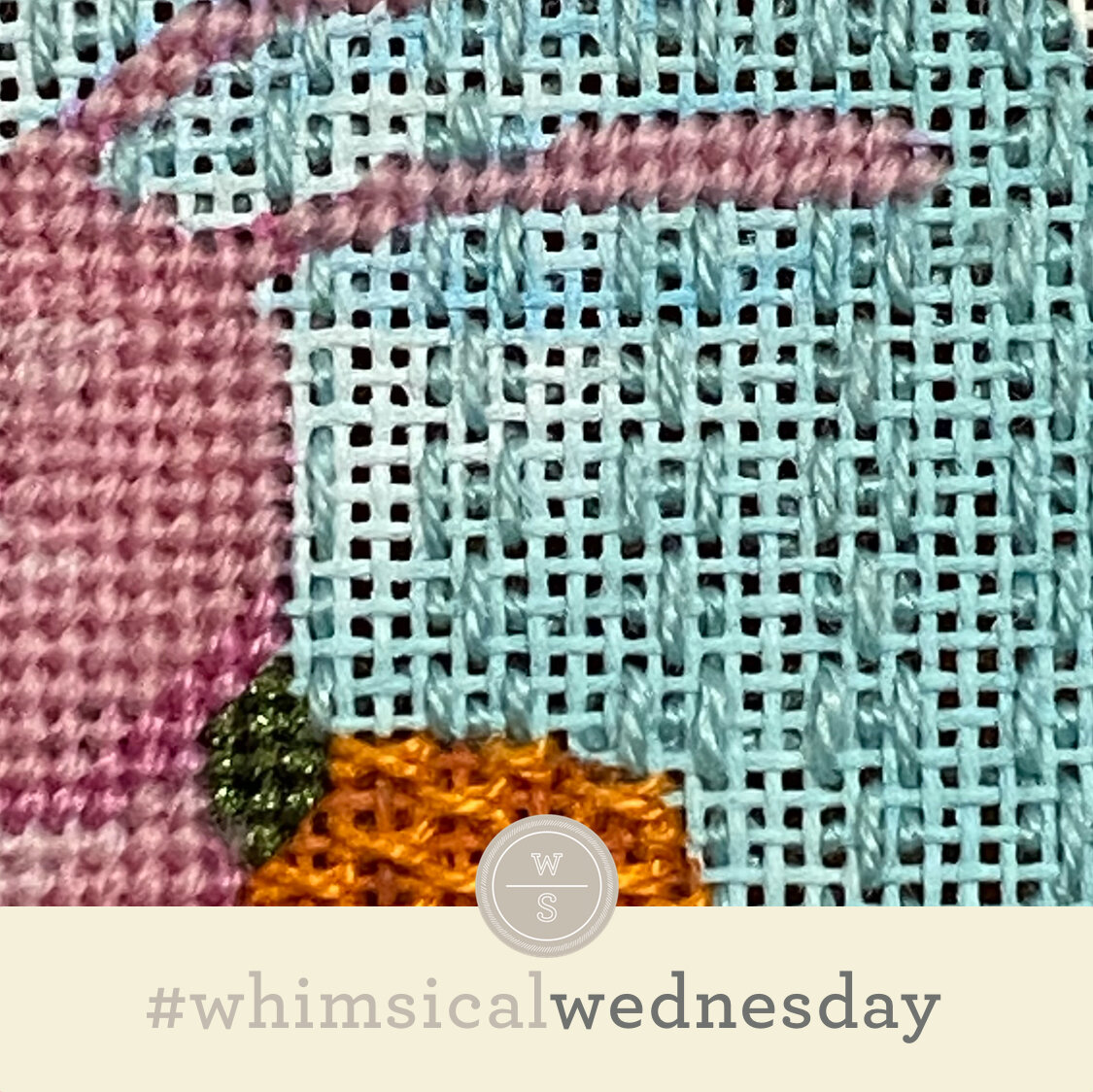Today’s stitch started out as a stitch I introduced in an embellishment class for a sky behind a witch (by Melissa Shirley) and ended up as the sky behind a row of houses on a Melissa Shirley winter Christmas piece. I promise it is a great candidate for a sky stitch on designs by any designer and not just those created by Melissa Shirley.
The inspiration for this stitch comes from the Straight Shifts stitch in book 3. Today’s stitched sample (from the Melissa Shirley Christmas piece) includes narrow bands (three rows) of stitches, using two plies of Soie D'Alger (black lines) and Petite Silk Lame (yellow lines). The space between the bands is random to add more organic motion.
Those same open spaces between the bands were the inspiration to make the small snowflakes (or stars) stand out more. The snowflakes were painted as simple 2X2 white squares. I added a crystal O bead (from artbeads.com) and attached it with a 2mm faux pearl from S&J Designs.
Meanwhile, back on the Melissa Shirley witch, my independent-minded customer added two more rows of metallic to each band. (In unsurprising news, she used Soie d’Alger for the black lines and Petite Silk Lame for the yellow lines, as illustrated on the right.) She reduced the amount of space between the bands, and I think it worked perfectly. (Full disclosure: I asked her for the stitched samples Tuesday morning and told her how I was going to present it in the blog post. Her response? “I am honored and humbled to be your student gone bad!!! I am really not worthy.”)
It’s a fun stitch that may not work everywhere, but I am looking forward to using it for water with two shades of lightweight Kreinik. I also think the denser version from the witch sample would actually make a really interesting stitch for a moon with silk floss and a lightweight metallic (Kreinik or Petite Silk Lame).
As you are auditioning stitches (from any stitch source), count the number of canvas threads on the diagram that match your mesh size. And there you have what an inch of the stitch will look like. Evaluate that against the area where you plan to use the stitch and make your final decision. If you start integrating this step into your stitch selection process, you may be surprised at how many stitches you think are large are much smaller than you realize.
By (sometimes) including this step in my own process, I find I am now integrating much longer stitches than I ever thought I would. I used to think a stitch six rows long was super big. I have very much changed my tune, which has helped me expand my creativity, especially for large-space stitches.
Today’s stitch diagram, along with all other #whimsicalwednesday and #smallspacesunday stitch diagrams, can also be found on a Pinterest board here. Be sure to follow whimsicalstitch.com on Facebook, Pinterest, Instagram, and Twitter.
If you like what you see on this blog, there's more. Mary’s Whimsical Stitches is a series of four books offering contemporary how-to collections of more than 200 stitches (in each volume) for all stitchers, regardless of skill level. All books include updated and sequenced diagrams from this blog, plus a collection of all-new stitches from private lessons and other class projects. Visit here to find a needlepoint retailer that carries my books.
New to needlepoint or looking for a refresher? Please download a handy how-to guide covering basic needlepoint stitches and stitch compensation techniques along with new top-line information on needlepoint materials and tools, how to handle threads, and other helpful needlepoint resources.
whimsicalstitch.com also sells Stitch Guides and Stitch Concepts for Melissa Shirley Designs, Zecca Designs, Sandra Gilmore, Purple Palm, Maggie, and Penny MacLeod, and many more. Click here to see the newest guides and click here to see the entire collection.
I hope you have the perfect spot for this stitch! Please enjoy! Have a wonderful #whimsicalwednesday!
A Note about Diagrams
I use color in diagrams to make them as clear as possible. The primary function of different colored lines is to illustrate a stitch sequence. For example, the layering of colors demonstrates you add them in that order. They can also provide ideas on integrating additional threads (one line for each color). Or, you can use the same thread for all color lines. That's where I encourage you to use your imagination for the space you are stitching!













